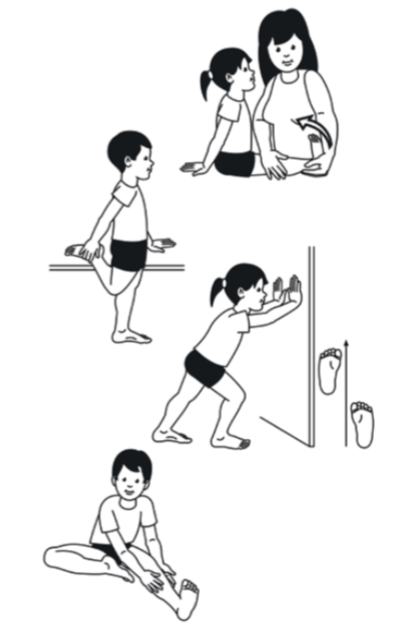Stay informed and empowered on your arthritis journey.
Sign up for the Arthritis Australia newsletter today and receive the latest updates, expert insights, and practical tips delivered straight to your inbox.
‘Growing pains’ is a name used to describe a pattern of pain in one or both legs, which occurs in young children often later in the evenings. Growing pains are also known as Benign nocturnal limb pains (BNLP) especially when they occur in the evening or at night time.
The cause is not known, but may be related to times of rapid growth or vigorous physical activity.
The cause is not known, but may be related to times of rapid growth or vigorous physical activity. These are usually due to an imbalance between bone length and muscle strength, which occurs during growth, and settles as growth evens out. Therefore, there will be periods where the pains are more, or less, of a problem. Pain can be worse in the evenings after physically active days (e.g. after sports training or a party). The pain can sometimes wake the child from sleep.
The most accepted theory is that the pain originates from the muscles in the legs.
It is common for other family members to have had similar pains in childhood.
Growing pains are common and affect otherwise healthy children. The pains usually start in the preschool years. Growing pains are often difficult to pinpoint, but are usually in the legs. Swelling, tenderness, redness or limping are NOT features of growing pains. If these are occurring, your child should see a doctor.
Growing pains are usually short-lived (approximately half an hour), but can be very distressing.
If your child is thriving, is well and is free of pain during the day, generally no investigations are necessary for your doctor to diagnose growing pains. It is worth seeing your doctor who can assess your child, rule out any other causes of pain and confirm they have growing pains.
There is no specific treatment for growing pains. They do not cause permanent damage to the muscles, bones or joints and will go away completely over time.
Heat packs, warm baths, massage and paracetamol or ibuprofen (e.g. Nurofen) are used by some parents and may provide some comfort. The benefits of these home treatments are not well proven for growing pains and the pain will go away even if nothing is done.
Usually the pains disappear within a couple of years, but can affect some children for longer.
Growing pains invariably get better on their own over time.

CONTACT YOUR LOCAL ARTHRITIS OFFICE FOR MORE INFORMATION AND SUPPORT SERVICES.
Websites:
Australian Rheumatology Association, American College of Rheumatology, Arthritis Foundation (US) , Arthritis Research UK
Find out about what accessible design is and about the Accessible Design Division.
Here is our 10 steps checklist to help you live with arthritis.
Arthritis Australia advocates to government, business, industry and community leaders to improve care, management, support and quality of life for people with arthritis..
Regular updates, news and research findings delivered to your inbox:
Already have an account? Login
Not registered? Create an account
Enter your email address and we'll send you an email with a link to reset your password.
The confirmation link is either expired or invalid.
An email has been sent to to confirm your details. Please click the link in the email to finish your account setup.
To finish your account setup, you must verify your email address.
Arthritis Australia is not responsible for the content or availability of linked sites.